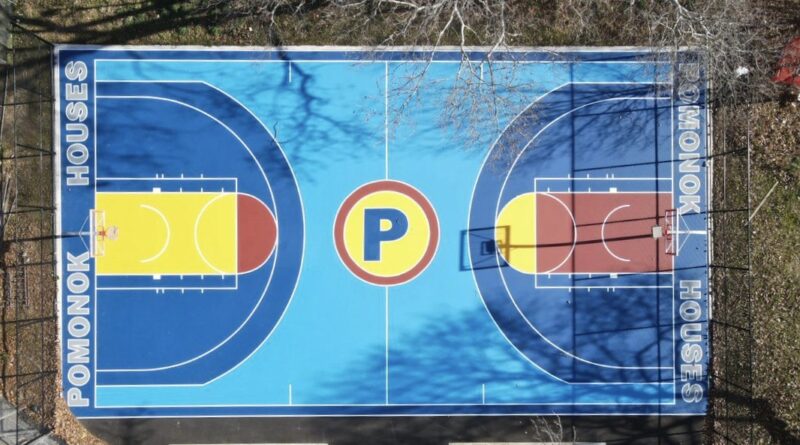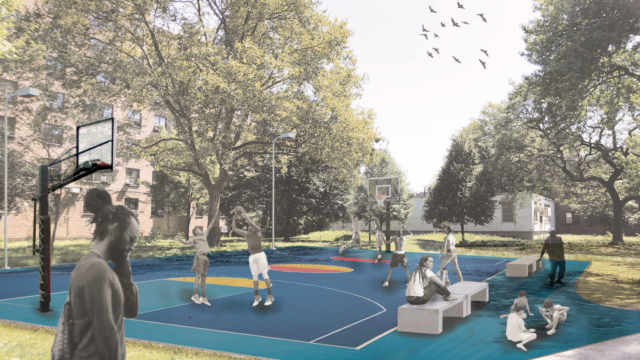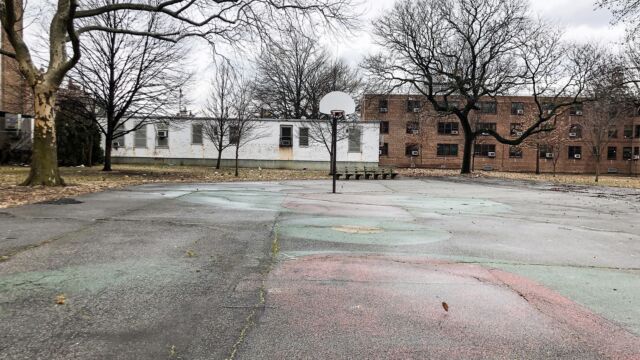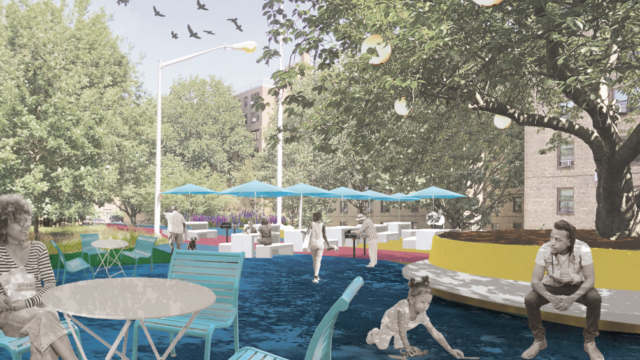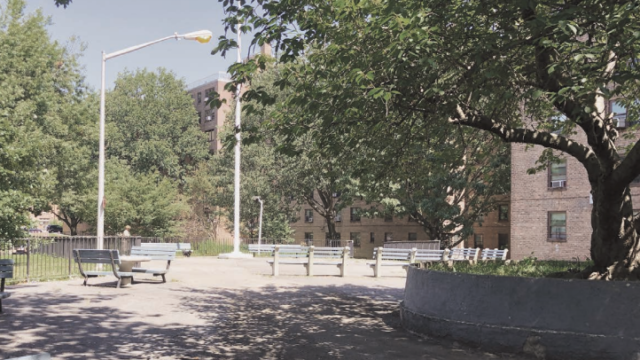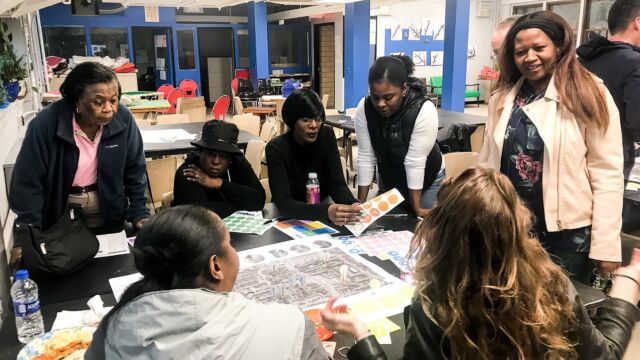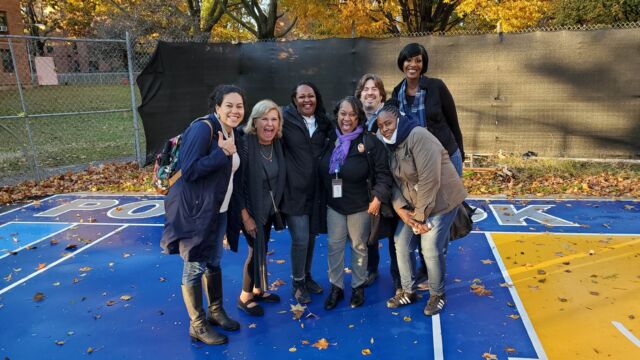Basketball Court, BBQ Spaces Support Connected Communities at Pomonok Houses
NYCHA’s Connected Communities initiative is focused on activating and improving open space, through efforts to enhance physical and social connections between residents and their communities.
One development where this initiative is taking shape with the support of an active resident community is Pomonok Houses in Queens. An outreach effort that was launched a few years ago focused on encouraging residents’ participation and voices in decisions about how open spaces could be better used at their development.
With the goal of creating more spaces for positive interaction and improving residents’ overall quality of life, the engagement process incorporated urban design practices and involved multiple partners, including the nonprofit Hester Street. Pomonok Houses residents were engaged at various community events to help identify open space needs and priorities that would support NYCHA’s mission of providing safe, clean, and connected communities.
“The process focused on engaging with community stakeholders to figure out how to design spaces that really met their needs,” said Delma Palma, NYCHA’s Deputy Director of Architecture and Urban Design.
Among the most immediate projects selected by residents for implementation were a renovated basketball court and a designated barbecue area, which are slated to open this summer. Helping to kickstart the Connected Communities efforts at Pomonok was a donation from the Helmsley Charitable Trust to the Fund for Public Housing, a nonprofit that works to support NYCHA and its residents.
NYCHA partnered with urban design consultant Hester Street to facilitate the engagement process with residents, who provided feedback on how open spaces are used on the Pomonok campus and what areas could be improved. More than 200 residents participated in surveys, community events, and workshops over several months, helping inform priority projects that would address their concerns.
“In our engagement processes, we always aim to lead with local expertise, local knowledge, local skills, and local services,” said Kim Ochilo, a project manager at Hester Street, noting that projects are intended to meet the needs of residents who live at the development. “We think that putting residents at the forefront also strengthens partnerships among community organizations and community leaders, and also builds accountability between those residents and local leaders and other City agencies.”
Vaidehi Mody, an urban designer in the Capital Projects Design Department, explained that Pomonok residents were asked how they feel about their open spaces and to share ideas on how and where projects should be designed. In prioritizing the ideas, residents considered issues such as safety and security, gathering and socializing, sports/recreation, and walkability/accessibility.
“We were using this project to create a method of what’s the best way to engage NYCHA residents when it comes to the redesign of open spaces,” Ms. Mody said. “The key is to meet the community where they are and create the processes around their events and their schedule and their plan.”
The community pointed to the basketball court upgrades and communal area with barbecue pits and seating as the two projects to jumpstart the Connected Communities initiative at Pomonok. Construction began in the fall for the basketball court – which has received new surfacing, paint, hoops, and nets, among other renovations – while work is still underway for the communal barbecue space.
“We received lots of community feedback and came upon the design for these two spaces,” Ms. Palma said.
Although the projects are not expected to debut until the summer, residents are eager to enjoy the new additions to their neighborhood.
“We are at a place where our basketball court has been completely renovated, completely rehabbed,” Pomonok resident Rasheeda Jennings said. “The effort that went into putting this project together is absolutely amazing. This place is beautiful.”
Adriane Curry, a community coordinator in NYCHA’s Resident Engagement Department, credited Pomonok’s active resident association (RA) for helping to push forward the improvements, adding that RA President Tamika Williams reached out to the local City Council office when there was a need for additional funding.
“The Pomonok association is about meeting the residents’ needs, and they have done that with these two projects,” Ms. Curry said. “This association really worked hard for the residents.”
When the refurbished basketball court and new barbecue pits finally open to the public, Ms. Williams expects the areas will be appreciated and heavily used by the community.
“What we’re happy about is that we’re building outside spaces so that people can congregate,” she said. “I think they will promote unity in the community.”
Ms. Curry agreed: “This will be a more welcoming environment in their community, a place where the children can go and play safely. The barbecue area will bring them more close-knit as a family, and residents will get to meet one another and get to know more residents in a safer environment.”
Ms. Mody noted how the projects fit in line with Connected Communities’ goals of creating more spaces for positive interaction, while the engagement process has informed future implementation of the initiative at Pomonok and across other NYCHA developments.
“It has truly highlighted that engaging users – the residents – to design and determine what a project should be, just leads a project to success,” she concluded. “This project has left us with amazing working relationships with the residents, and for any project in the future, this project informs us that this is how you should be engaging with residents from the start to come out with such results.”
Feature photo caption: Aerial view of the renovated basketball court space at Pomonok Houses. (courtesy of Tameek Williams)

